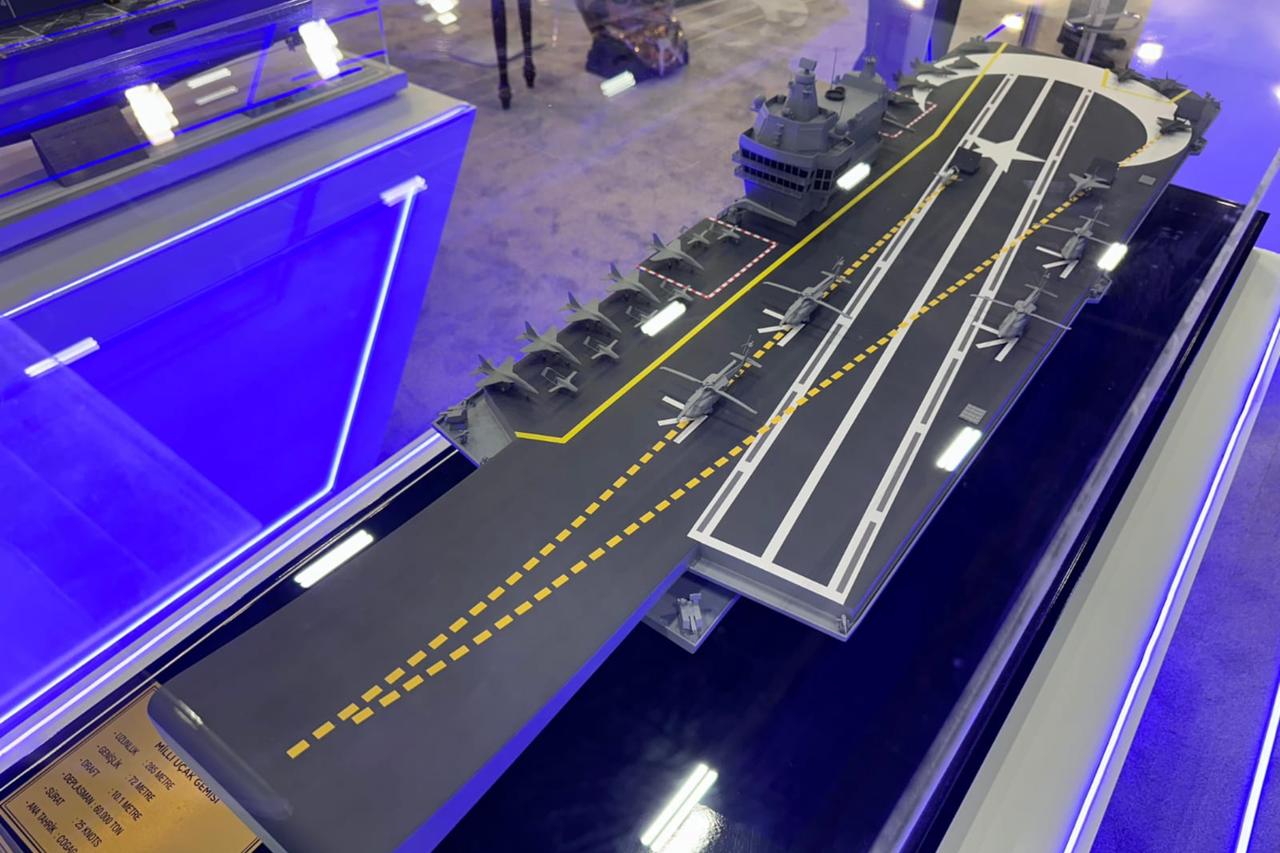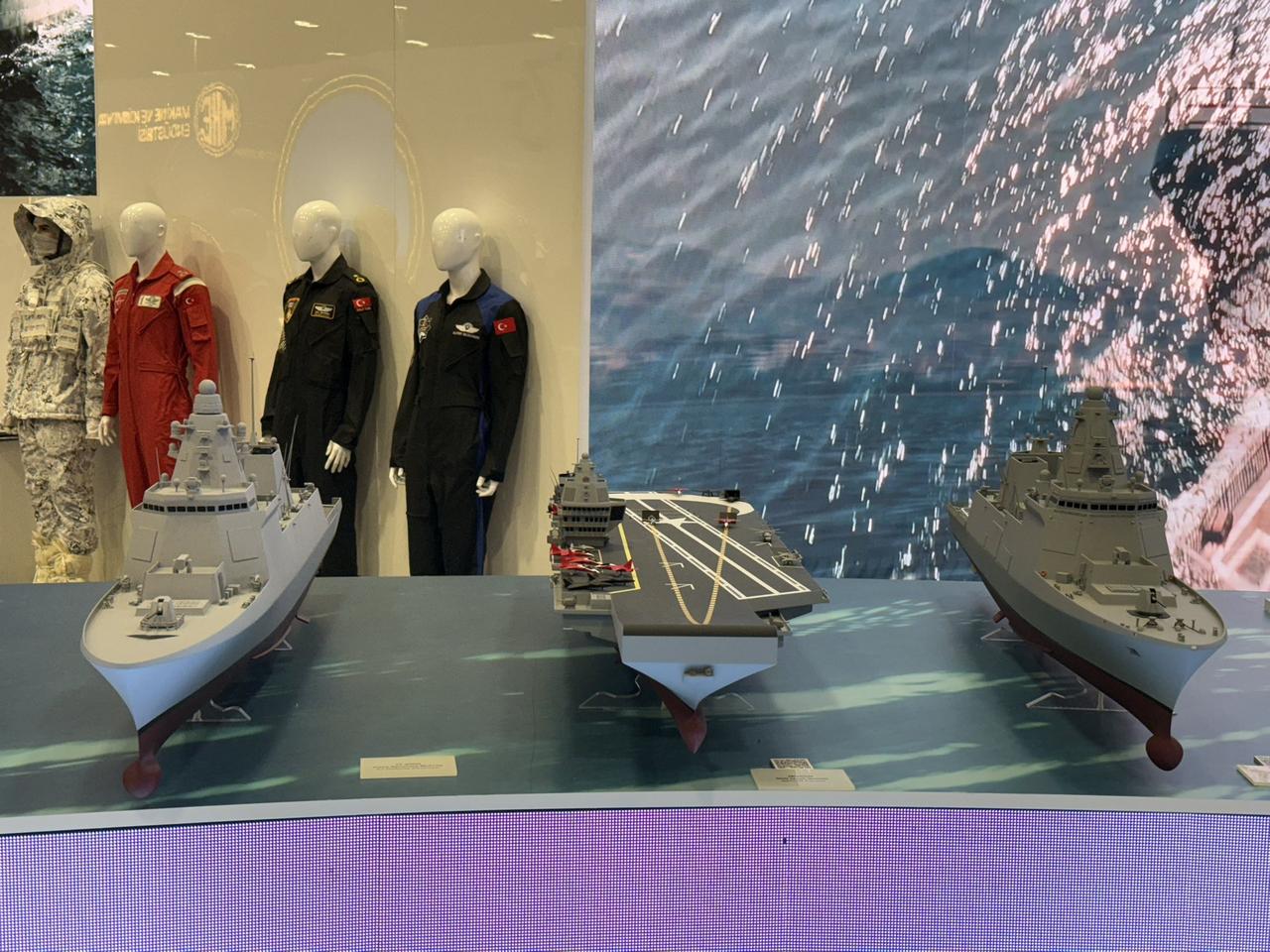
Türkiye has officially begun construction of its National Aircraft Carrier, also known as MUGEM, which stands for "Milli Ucak Gemisi," meaning "National Aircraft Carrier," a 285-meter, 60,000-ton vessel that will significantly surpass the capabilities of the TCG Anadolu and serve as a mobile base for the country's expanding fleet of unmanned aerial systems.
Istanbul Shipyard Command announced the start of the construction phase for the vessel, which represents a significant advancement in Türkiye's defense industry and maritime capabilities.
The new carrier will enhance the Turkish navy's strategic power projection capacity to unprecedented levels.

Rear Admiral Recep Erdinc Yetkin, commander of Istanbul Shipyard, confirmed the project's ambitious scope and timeline during a Turkish media outlet's live broadcast late Monday.
"We have started the construction of the National Aircraft Carrier," Yetkin said. "It will be 285 meters, 60,000 tons. Anadolu was 230 meters, 27,000 tons."
The new platform will become the largest warship in the Turkish navy's inventory, dwarfing the current flagship TCG Anadolu. The vessel is being designed based on experience gained from the TCG Anadolu project while incorporating significant enhancements in size and capability.
The project maintains an aggressive timeline for completion, with sea trials scheduled within the next few years.
"We aim to launch it in 2027-2028, with delivery in five years. We won't wait until 2030," Yetkin announced.
To meet these targets, the project team has prioritized the development of critical subsystems and testing infrastructure, particularly for aircraft landing and takeoff integration.

The carrier will feature full integration with Türkiye's domestically produced unmanned aerial vehicles (UAVs), positioning the vessel as a pioneering platform for drone warfare capabilities.
"Kizilelma, TB3, Anka, TB2 will take off and land on it," Yetkin stated, listing the unmanned aircraft that will operate from the carrier's deck.
This configuration will transform the vessel into more than a traditional aircraft carrier, establishing it as a mobile base for unmanned combat aircraft and drones while giving the Turkish Naval Forces a world-leading role in this domain.

A crucial component of the project involves the construction of specialized testing facilities to ensure seamless integration of aerial platforms before sea trials begin.
"We will complete the test flight ramp of the National Aircraft Carrier within a few months. We will give this ramp to our aircraft manufacturing companies Baykar and TAI, and they will start flight tests on land," Yetkin explained.
This approach aims to minimize risks and accelerate the integration process before transitioning to maritime testing phases.
Yetkin reflected on the transformation of Türkiye's naval capabilities over recent decades, highlighting the dramatic shift from foreign-dependent systems to domestic production.
"When I first started duty in the Navy in the 1990s, I served on ships that had participated in World War II, donated to Türkiye in 1979, with no national systems on them," Yetkin said. "Within the past 20 years, we have succeeded in integrating command and control systems, software, all radar and fire control systems developed with our national capabilities and our own engineering capabilities."
He noted that Turkish shipbuilding achievements have gained international recognition: "This was also called the 'Corvette Revolution' of the Turks in the international shipbuilding literature, so MILGEM projects have played a locomotive role for our defense industry."
"Ships are built based on an operational need, meaning each of our projects must respond to a requirement, because such large costs and great efforts are spent, and the resulting product must meet our needs in accordance with the targeted concept," Yetkin emphasized.